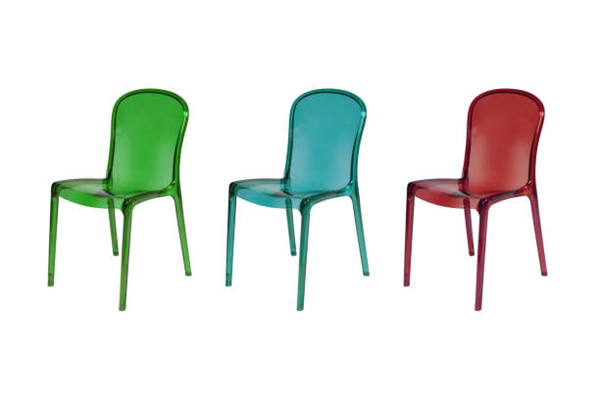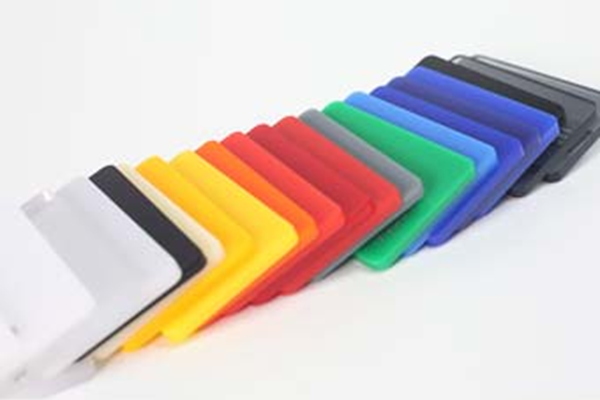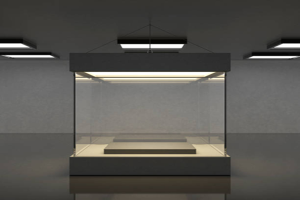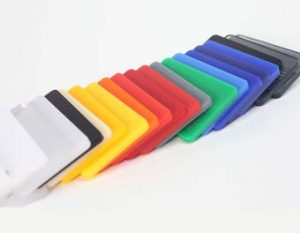Acrylic has become a favourite in interior design, thanks to its versatility, clarity, and durability. From bold furniture pieces to sleek lighting and captivating artwork, acrylic adds a modern, sophisticated touch to any space. At Denny Plastics, we supply top-quality acrylic for designers and creatives, enabling them to bring innovative concepts to life. Here’s a look at how acrylic can transform interior spaces and inspire unforgettable design.
Acrylic furniture: Contemporary, clear, and chic
Acrylic furniture has become synonymous with modern elegance. Its transparent quality allows it to blend seamlessly with any decor style, creating an illusion of space while adding a unique focal point.
Popular acrylic furniture applications:
- Tables and Desks: Acrylic coffee tables, side tables, and work desks are trending for their minimalist appeal. These pieces add functionality without visually cluttering the space, perfect for smaller rooms or open-concept designs.
- Chairs and Stools: Acrylic chairs and bar stools offer a chic alternative to traditional seating. From ghost chairs to vibrant-coloured options, acrylic seating can suit both minimalistic and bold design preferences.
- Storage Solutions: Acrylic bookshelves, organisers, and display cases allow items to stand out while maintaining a clean look. Many designers use acrylic to showcase items without distracting from the surrounding decor.
Acrylic furniture’s ability to reflect light enhances natural illumination, making rooms appear larger and brighter.
Acrylic lighting: Shaping and enhancing atmosphere
Lighting is a powerful design element, and acrylic’s light-transmitting qualities make it a fantastic material for lighting installations. Designers can shape, colour, or etch acrylics to create custom lighting pieces that become artistic statements.
Popular acrylic lighting applications:
- Pendant lights and chandeliers: Acrylic pendants and chandeliers provide striking centrepieces with a modern twist. You can colour or tint the material, providing a variety of options that emit warm, diffused light for a cosy ambiance.
- Wall and Ceiling Fixtures: Acrylic wall sconces and ceiling lights are ideal for subtle lighting that doesn’t overpower a space. Clear or frosted acrylic creates a soft glow, ideal for bedrooms, hallways, and dining areas.
- LED-Illuminated Features: LED-lit acrylic panels add a futuristic touch, perfect for creating mood lighting or accenting architectural features. Many designers use LED acrylic lights in kitchens, offices, and even outdoor areas.
Acrylic lighting fixtures are lightweight, durable, and adaptable, which makes them suitable for various design styles from contemporary to industrial.
Acrylic Art and Decor: Adding Personality and Pop
Acrylic’s versatility allows for endless artistic possibilities. From large wall installations to decorative sculptures, acrylic art pieces add colour, depth, and a modern edge to any space.
Popular Acrylic Art and Decor Applications:
Wall Art and Panels: You can print or paint acrylic sheets to create vibrant, durable wall art. Layered acrylic panels add depth, while cut-out designs can create intricate, eye-catching displays.
Sculptural Decor: Acrylic’s flexibility allows artists to shape it into unique forms, making it an ideal medium for sculptures and 3D decor. These pieces can be clear or coloured, creating dynamic focal points in a room.
Room Dividers and Partitions: Acrylic partitions serve as functional art pieces, offering privacy without blocking light. They come in various colours and finishes, from clear to frosty, making them adaptable for open-plan homes and office spaces.
With acrylic’s adaptability, designers can personalise art and decor pieces to reflect their clients’ tastes while adding a contemporary flair to the space.
Why choose acrylic for interior design?
Acrylic’s unique qualities make it an ideal choice for modern interiors. Designers and homeowners gravitate towards acrylic for the following key reasons:
- Transparency and Light Transmission: Acrylic is known for its high light transmission, which makes spaces feel open and airy.
- Durability and Easy Maintenance: Acrylic is both lightweight and strong, making it easier to handle and less prone to damage than glass.
- Colour and Customisation Options: Acrylic can be produced in various colours, textures, and finishes, allowing for limitless customisation to suit any design concept.
- Sustainability: When used thoughtfully in design, acrylic is a more sustainable option because it is recyclable and frequently repurposed.
Inspiration for Your Next Project with Denny Plastics
Whether you’re designing a minimalist home, creating a vibrant art installation, or planning a chic office space, acrylic offers endless possibilities. At Denny Plastics, we provide a wide range of acrylic products to help bring your creative vision to life. From customised sheets to coloured options, our acrylic solutions meet the needs of designers, architects, and artists alike. Explore our selection and find inspiration for your next project at Denny Plastics. With the right acrylic touches, you can create a space that’s both functional and aesthetically striking.












